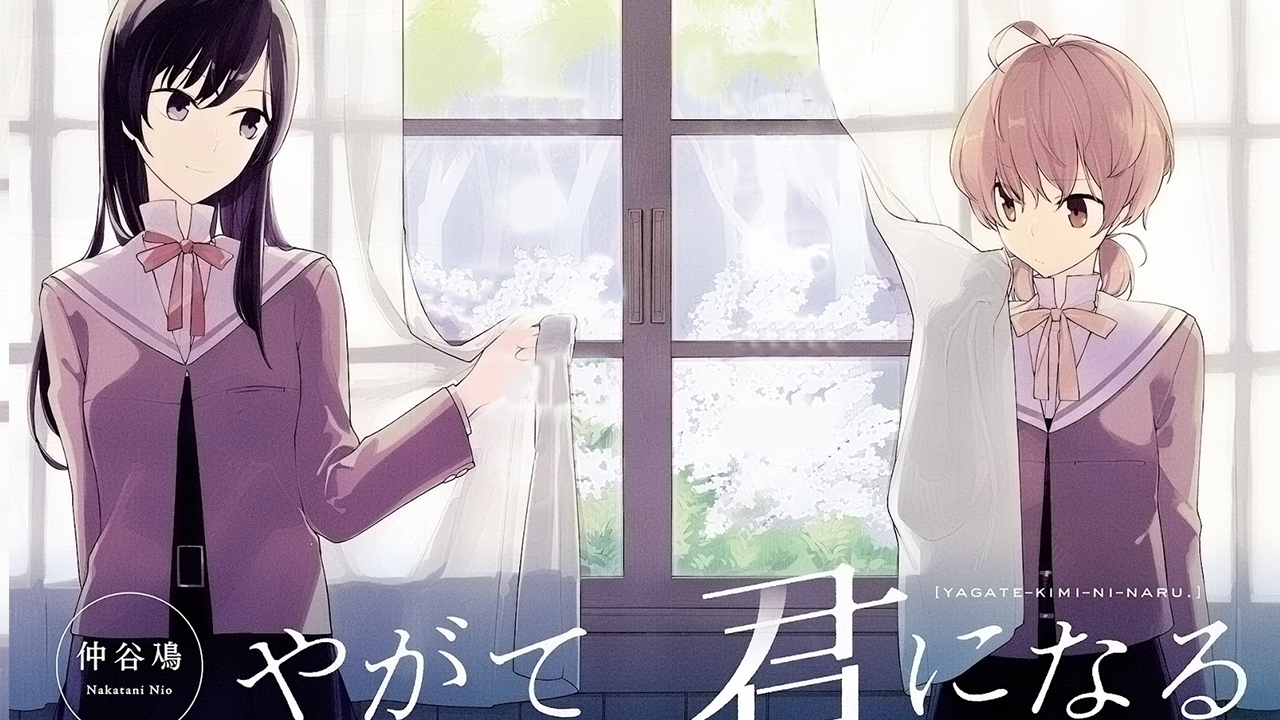
Manga Editors Roundtable – The Growth of Yuri
Today megax brings us another translation dealing with an “anime industry” aspect beyond what is usually highlighted.
This is an roundtable covered for Akiba Blog (NSFW link) by KarzuSP. I felt it’s an interesting discussion about a topic that seems to be growing both domestically in Japan and internationally with many fans devouring the yuri genre. It may lead to more anime adaptations, so this could be a good ground point for a growth in yuri fandom. Enjoy.
Up until now, the “yuri” genre, focusing on themes of romantic relationships between women, had grown based on publications in specialty magazines. Currently it’s starting to stand out more thanks to events like many works appearing in general magazines, and the guidebook An Introduction to the World of Yuri being published. Additionally, Kadokawa’s Dengeki Daioh Editorial Board is publishing Éclair; A Yuri Anthology That Resounds Within You this month. In this piece, we’ve interviewed the editors of two works that continue to stand out today, Dengeki’s Bloom Into You (Author: Nio Nakatani; published in Kadokawa’s monthly “Comics Dengeki Daioh”) and Square Enix’s Happy Sugar Life (Author Tomiyaki Kagisora; published in Square Enix’s “Gangan JOKER”), about publishing “yuri” titles in general magazines. Both editors’ fiery emotions exhaust this topic! Furthermore, we were able to have the editor who handled An Introduction to the World of Yuri present with us, so we deliver to you a roundtable where a serious yuri manga talk bloomed.
Editors
Tatsuya Kusunoki – Dengeki Daioh Editor. In charge of Bloom Into You and Cooking With the Shinmai Sisters among other titles. Helped compile this month’s yuri anthology Éclair; A Yuri Anthology That Resounds Within You.
Katsuyuki Sasaki – Gangan JOKER Editor. In charge of Happy Sugar Life and Gambling Fiend among other titles. Observe that the degree of yuri is also high in Gambling Fiend Twins.
Ryouji Takamatsu – Editor at Studio Heart Deluxe. A yuri-loving editor who planned An Introduction to the World of Yuri. In this talk, he comments on various things as he overlooks the yuri genre.
Not bound by a magazine’s style; the big hit Bloom Into You focuses on genuine yuri.
– Do you remember when you first knew about Bloom Into You?
Sasaki: Last year, Dengeki Daioh kept landing hits with strong yuri titles (Bloom Into You and Cooking With the Shinmai Sisters). I remember thinking that it was unusual for a general magazine to continue delivering successive yuri hit titles. The binding for Bloom Into You was also so amazing that I was also impressed by that as well. The obi was especially gallantly drastic as well.
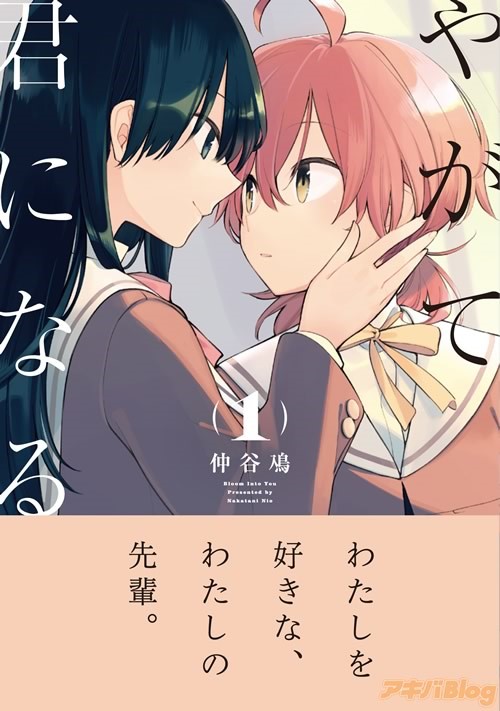
Kusunoki: Thank you very much. The atmosphere for our works is very important to us, so we’re also quite obsessive over the binding for our titles. It makes me very happy to hear you speak about the design. We construct the obi thinking about the phrase it’ll use to promote it before the cover illustration is made. Once we first get the obi’s phrase, then we ask Nakatani-sensei to create a matching illustration.
Sasaki: That is an unusual order of events.
Kusunoki: I believe that you’re able to get people to try reading it when the obi phrase and the illustration match due to something like the value being raised due to their synchrony. The phrases for the first and second volumes were my idea, but the one for the third volume was an idea submitted by Nakatani-sensei and as a result it was absolutely marvelous….so please enjoy the phrase the author came up with.
Also, I was very worried about trimming the illustration for volume 1’s cover. In the end, the designer went with a daring close-up they discovered while experimenting, but….. At the same time, the first volume for Happy Sugar Life was also released, so when I saw its cover, I realized our close-up was no match for theirs. (laughs)
Sasaki: Ours was a cover art for a psycho horror work though. (laughs) Our concept was “at night, when your eyes meet, you feel incredibly scared,” but I was shocked when I heard that some people found those huge pupils to be cute. From the start, we began serializing it as a psycho horror title without thinking of it as “yuri.” Even though we thought of it that way, the reaction online felt more like “JOKER’s started a cult yuri title.” Starting from that time point, I learned what the phrase “sis-loli” really meant. (laughs)
Kusunoki: No, no, no, it was obviously yuri! (laughs) There’s no doubt that it’s a psycho horror title, but you can’t say that the two girls’ relationships isn’t “like” or “loving”!
Sasaki: For yuri, you can have plans to go with it beforehand and have “planned yuri” or you could not aim for it, but it eventually go that route and the fans call it “eventual yuri.” Happy Sugar Life is the latter, and I believe another title I edit, Gambling Fiend Twins, is also an “eventual yuri”-ish title too. Happy Sugar Life is also a story of love between two girls, but we weren’t thinking of it as a yuri work when we were starting it.
Kusunoki: But I believe that Sasaki-san has something like yuri training present deep within his heart. Especially in that you have no uncomfortable feelings when you receive something with two girls saying “I love you” to each other and therefore proceeding the planning for that title.
Sasaki: Well, that might be true too. (laughs) Although whatever title I’m in charge of, I feel that it has to be something that the creator wants to draw in the end. In that sense, I might be linked by fate to authors who have a foundation in yuri….. How is it over there at Dengeki with “planned yuri?” I don’t think the hurdle to publish it is that high. I’ve felt that Dengeki’s brand embraces many different types of works up until now.
Kusunoki: For Bloom Into You, Nakatani-sensei talked with me about “wanting to depict a yuri story” from the very beginning. As you said, we could place a straightforward yuri title in “Dengeki Daioh”, but there was a part of me that arbitrarily raised the hurdles. But the editorial board’s pockets were wide and cheerfully okayed it for us. However, I saw there were a lot of yuri fans saying “There’s a new yuri title serializing in “Dengeki Daioh,” but I don’t know if I believe it’ll actually be yuri,” when it first started running. While they think it’s yuri at the moment, I felt the fans were afraid that there would be a development where a female character starts dating a male character.
Takamatsu: There’s some works that have yuri throughout the title, but eventually the girl finds her happiness with a man, so there’s readers who are strong enthusiasts that feel betrayed whenever a male character appears. When Maki-kun appeared in Bloom Into You, they would feel a bit anxious.
Kusunoki: But we declared his stance early as “our likable representative who watches over the couple.” This is my own personal thoughts, but I think it’s better to make something individually instead of making something that fits the theme of a magazine. Also, as I feel it’s a waste for people to give up before finishing because “it’s no good if a guy shows up,” I’m more pleased if people try out different kinds of yuri.
Takamatsu: Speaking of Happy Sugar Life also being an “eventual yuri” title, it’s published in the general magazine “Gangan JOKER” as well.
Sasaki: In “Gangan JOKER” we also publish The Uniform of Vampires Road, a title that strongly pushes its yuri aspect. It’s a magazine that has titles aimed for men and titles aimed for women in it, so the range of publications is quite large. In comparison to “Dengeki Daioh” where there’s a part that may not fit the general direction, there wasn’t any outside pressure against the publication of Happy Sugar Life.
With the amount of yuri-ish scenes in general works also increasing, the foundation of acceptance is widening.
– How do you, as a manga editor, perceive the recent trend of yuri coming out in more general magazines?
Sasaki: In addition to serious yuri enthusiasts, I think this is a consequence of people who like manga having read a lot of series and becoming connoisseurs. They want more diversity in relationships in works now. Certainly, I’d think that Cooking with the Shinmai Sisters would be received well by that type of reader.
Kusunoki: It’s a cooking manga, but you could also see it as a yuri work as well. It’s freedom to see it as either.
Takamatsu: I inserted it in the “heartwarming and tender works” in An Introduction to the World of Yuri. Sister yuri would be major and in a specialty magazine, but the sense of “though there’s no strong vibes coming out for each other, their similar feelings come along” is amazingly lovely. Because of that I strongly decided to include it in An Introduction.
Sasaki: As the flow of entertainment itself has changed, there’s been an increase of depictions where romantic triangles or squares aren’t between two girls or two boys, but instead it includes both genders. Among that, it seems yuri has also been easily received by the audience.
Takamatsu: Before manga started increasing the depiction of yuri, anime started having more yuri-ish relationships as well. It was the foundation for yuri to be received. Strike Witches is an example of a work where there was a strong yuri awareness in its production. And then since anime fans and manga fans have a similar affinity together, that awareness migrated to manga fans as well.
Kusunoki: Nowadays I hear a lot of yuri fan voices saying shows made for primary schoolgirls like the Precure series or Aikatsu! “are the strongest yuri anime.” It’s amazing that you can recognize something as yuri even with 3D videos like SKE48 PVs! Compared to when I was a child, now it feels like we’re creating the groundwork today for there not to be any uncomfortable feelings when you see two girls together.
Takamatsu: With those kinds of anime proving to be commercially successful, it’s also made it easier for manga to depict yuri in general magazines too. Female archetype reactions towards men like tsundere actions were major, but they’re now becoming common towards other women too.
Sasaki: There’s that kind of things in shows like Love Live Sunshine which have a lot of girls active in the show. Someone is being depicted as being jealous of someone else or something like that.
Kusunoki: In Love Live Sunshine, usually you imagine that You-chan would definitely become jealous of the other girls, but I was shocked when that surpassed my imagination and became reality. Overall, I saw a lot of depictions where yuri language was used. I don’t know if they were consciously creating it with yuri in mind, but I thought “ah, we’ve reached a point where the framework of yuri has broadened enough to be used for a general audience.”
Works not shying away from difficult themes and taking great efforts to depict them easier to understand is enjoyable.
– In An Introduction to the World of Yuri, what did you talk about with both of these works, Takamatsu-san?
Takamatsu: I divided works into genres like “heartwarming,” “serious,” and “fantasy,” but I think there’s two big types that works can be divided into. One uses the traditional yuri structure as a base and moves drama on top of that called “theme yuri.” The other depicts a world the creator wants to depict with the story first and then the yuri strongly comes out afterwards called “yuri component.” I’m immensely happy that Bloom Into You can come out as a “yuri theme” work in a general magazine instead of one of the specialist magazines like “Tsubomi,” “Hirari,” and “Yuri Hime.” Because it was able to run in one of those magazines, I placed a catchy title for Nakatani-sensei’s page.
Kusunoki: “A superstar shooting across the yuri world like a comet” is such a powerful phrase.
Takamatsu: I think she’s someone that people should value to that extent. She pushed yuri over the entire work, didn’t allow it to be pushed aside, and there’s a sense of security for this work due to that, so I had no choice but to be able to feature it.
Sasaki: I think yuri manga loses its universality. What I mean by that here is “the question of if it’s easy for everyone to empathize with the characters”. While on the outside “a girl falling in love with another girl” may appear beautiful, there’s no experience with that for a lot of people, so it’s not easy for them to empathize with the characters when they see them. I think that’s a major hurdle that’s born for manga.
With that point in mind, the main theme in Bloom Into You is “not feeling that someone is special (to you).” That feeling is something that people who have gone through adolescence will surely know and it’s so great that this conflict would resonate with a lot of people! You could certainly use that universally. Even though I’ve said a lot about it appealing to a lot of people, being able to portray the “conflict about not feeling that someone is special” is quite difficult when working on a tale. It feels like the ability to create this story while convey that to the reader is the power of the Nakatani-Kusunoki combo.
Kusunoki: I think when you approach difficult themes as “how can we convey this so that people will understand the topic?” you’re able to make something entertaining. If you run away from difficult-to-understand themes, then you’re not able to depict anything relating to that theme. Conversely, if you depict something difficult so that the reader can understand it…then you’re able to make a manga that has a new type of entertainment to it. You can’t avoid putting in a lot of effort if you’re making something entertaining.
Surely, when you’re thinking about how to depict a character like Yu so that a lot of people can appreciate her is a difficult problem at the very early stages of production. To confront that, we collected a lot of romance histories from various women. In one of those histories, there was one that had something that felt like it would perfectly fit Yu: “not knowing what love feels like.” Thanks to using that story as reference, the process for Nakatani-sensei to determine how to depict and convey Yu was settled. That was an important process.
Sasaki: The tenth chapter concerning Touko was very entertaining. Up until that point, the story had been told from Yu’s side with her holding that type of complex about love, but when the tenth chapter revealed Touko’s inner thoughts, it completely turned the story that had been told to that point upside down. I roared “I get this now!”
Kusunoki: I talked with Nakatani-sensei and she mentioned the tenth chapter’s structure was “always meant to do that from the start of planning!” Because she had planned that, Touko’s monologues wouldn’t appear even once until that chapter. Up to that point, the approach to her was that she loved Yu, but what she had gone through and what she was thinking wasn’t known to the reader. With that chapter revealing her thoughts, it allows you to see the previous events in a different light. Bloom Into You really starts with that chapter. With how you’ll read various scenes differently after seeing chapter 10, please go back and revisit everything starting with the first chapter.
Takamatsu: When I first read Happy Sugar Life, it was constructed with how the other characters viewed Satou Matsuzaka as abnormal, so I read it without any impression that it was yuri. With various other characters having some abnormalities around in the series, the yuri aspect is unnecessarily difficult to comprehend. Due to that, I think it’s a “yuri component” series.
Sasaki: I’d agree. After all, other strange people appear in it too.
Kusunoki: Regardless, Happy Sugar Life’s Satou Matsuzaka is a spectacular character. No matter what, she “won’t waver.” She shows that in the 3rd volume. It makes the reader think “huh? Is this character going to change?” It promotes them to keep going wishing “don’t change, don’t change.” As a result, the reader clearly wants the character to stay the course and not change herself. Personally, I too get wrapped up in the palm of the author’s hands when I read series like that.
Sasaki: In contrast to Bloom Into You, where you read wanting to dig down into the minute details, in Happy Sugar Life, there’s strong emotions from the beginning, so we made it wanting to display a stronger emotion of “there’s no need for this emotion to crush every difficulty.”
Kusunoki: Satou does a lot of horrible things….you’d say she’s a criminal, but as a reader, you can’t not wish for her to be happy. I feel balancing that type of character so the reader won’t hate them is a very grave matter.
Sasaki: Her methods are strange, but her actions have meaning behind it, so you also think she’s a “likeable psychopath.” And then, wisely, there’s the love component allowing her to do technically things in order to maintain that love.
Kusunoki: I think the way that the minor characters have been stationed is a major component of why the readers will love Satou. As they’re portrayed as being very horrible characters, you’re inclined to hate them. Due to that, the reader will feel cathartic when Satou defeats them. At that time, they’ll also start to fall for her too.
Sasaki: Many strangers have come out haven’t they? Like a person who was so traumatized they became a lolicon…. And then Satou becomes this dark hero-type person amongst all these weird people. Also, when she injures someone, she has this pure motive of “I love Shio-chan, so I want to protect her happiness going forward,” so the reader can easily sympathize with her motive. Before the reader knows it, they become more likely to cheer her on instead of rooting for her to fall apart. There are people online who say she’s “innocent yuri-esque.” She’s “innocent.” (laughs)
Kusunoki: Well, if it’s yuri, then she is innocent when it comes to that. (serious expression)
Éclair: A Yuri Anthology That Resounds with You is packed with an abundance of different yuri manga
– Please tell everyone what are some yuri works that you’ve noticed recently.
Takamatsu: The first title that comes to mind is something that hasn’t been collected in a volume yet, but it’s called Yuzumori-san. Its acclaim amongst yuri fans is high and there is a lot of anticipation for when it’ll be collected into a volume. Similar to Bloom Into You, this is a series published in a general magazine that I hope to include in the “yuri theme” set of works.
Next is Hachi Ito-sensei’s work The Mistress and The Wolf-Eared Young Girl. It’s a sweet style, but here and there some suspenseful points are included that you’d like if you were a guy. Though there’s a lot of elements that the mangaka wanted to draw, like wolf ears, there’s a lot of portrayals that I like myself, so I enjoy reading it.
Sasaki: The new work from Sakura Trick’s Tachi-sensei, Dream Come True Love Sick, is good too. Given Tachi-sensei, you assume that girls are going to love each other, but there’s an amazing process to how they fall in love with each other. This work also had me enjoying it and commenting “Ah, so that’s how things are going.”
Another one is Ayami Kazama-sensei’s The Two are Bound by Stars. This is depicted as a yuri work, but Kazuma-sensei has drawn many yuri-ish works since she debuted. However, only now when she has built up her career as a pro has she challenged herself with a yuri work for the first time. The yuri that was drawn here was packed with the worth she obtained from having much experience as a mangaka, so it was very entertaining to read.
Kusunoki: In regards to the works published in An Introduction to the World of Yuri, Kuzushiro-san’s I’m Living with my Brother’s Wife has a lot of attention around it.
Sasaki: Since it’s our company’s work, I can say that the editor for it would say it’s not yuri at all. (laughs)
Takamatsu: That’s why even in An Introduction to the World of Yuri, I introduced it as a not-yuri title.
Kusunoki: Really….even though it’s that yuri-ish….It’s really got a strong title. The title alone, I’m Living with my Brother’s Wife can create such wild imaginations, so that’s a strength of the work.
Also, I want to introduce a couple of works that I want a lot of lot of yuri fans to read. The first is Takako Shimura’s Girl Running Away. The main character calls herself a strong lesbian, and she’s truly spectacular. There’s a lot of non-yuri pairings that appear, so it might be difficult for yuri fans to welcome them, but I absolutely want fans to read that series. I don’t want to spoil anything, so I won’t say too much. If you read it, you’ll understand what I’m talking about….
And also I’d like yuri fans to take a look at Ai Kozaki-sensei’s Asahinagu. Once you arrive at a certain scene in volume 16, and with everything that’s accumulated to that point, you’re shocked when you read it and are immensely moved. As a manga, it’s already entertaining enough to have been awarded the 60th Shogakuin Manga Prize award, but it’d please me if yuri fans also get on board and it rises to new heights. Sorry, I’ve completely turned back into looking at it from a fan.
– And also, there will be a yuri anthology coming out from Dengeki too.
Kusunoki: Yes. I’m privileged to be able to publish the yuri anthology Éclair: A Yuri Anthology That Resounds with You.
Sasaki: Speaking professionally, the amount of energy you spend creating a single anthology book is immense; if you don’t have a stronger motive than an ordinary volume, you can’t plan to publish one. The amount of conversations with authors is immense, and if there’s not any passion beyond your usual work interest, you can’t continue working on it. That’s why Kusunoki-san’s yuri passion is huge. (laughs)
Kusunoki: When I started editing, I liked yuri, so someday I wanted to make a book about yuri. To see it happen in real life gives me a lot of satisfaction.
Takamatsu: What kind of content is inside this anthology?
Kusunoki: I didn’t want to create any regulations on the type of yuri works in it so there’s a lot of different yuri works inside and a lot of variation between them…..And although I just said a lot of variation, not a single male character appears.
All: What?!
Kusunoki: It’s not confirmed yuri unless there’s no male characters! I was able to gather a lot of authors with great talent and amongst that talented author group, we have so many yuri works depicted. Elementary school yuri to adult yuri to wolf ear yuri. I thought it would be nice to assist people who had their eyes opened to yuri after reading Bloom Into You and are searching for their next yuri title. “Oh, so this type of yuri exists too.” I requested that it be published together with the third volume of Bloom Into You on November 26th, so I’m happy that could happen.
Sasaki: Similar to past anthologies, this isn’t just for the strong yuri fans; it’s great to have an anthology that can reach the outskirts of fandom like having female high schoolers buy it too.
Takamatsu: If Éclair takes off, I’d like to see other publishers publish yuri anthologies too.
Sasaki: Of course that would happen, if Éclair happens to take off like you said.
Kusunoki: Quit putting the pressure on me! I wanted to deliver this to many people from the bottom of my heart.
– Additionally, there’s a joint fair being held between Bloom Into You and Happy Sugar Life.
Sasaki Yes. With Happy Sugar Life volume 4 releasing on November 22 and Bloom Into You volume 3 releasing on November 26, we collaborated with Animate, Gamers, Melonbooks, and Tora no Ana to have a gigantic fair at each retailer. If you buy 2 or more books of either series, you will receive a 16 page full color illustration collection with newly drawn illustrations.
Takamatsu: It’s incredibly wonderful.
Sasaki: Though both works have different approaches, they share the same theme of “a girl finds something special to her for the first time.” I think fans of either work would be pleased with the other one. And then the latest issue of GanGan JOKER has Happy Sugar Life on the cover!
Kusunoki: Similarly, the January issue of Dengeki Daioh has Bloom Into You on its cover. With Bloom Into You and Happy Sugar Life new volumes being published, multiple bonus items, both works on the cover of their respective magazines, Éclair being published, and the monthly publications from Yurihime also coming out, this is an immensely revolutionary month for yuri. I’m delighted to be in such a great age.
Sasaki: It’s truly a “the autumn of yuri.”
All: (Laughs)
Takamatsu: I think the yuri genre is now in its second growth period. The term “yuri” has permeated the general audience, they’re aware of it, and they’re receptive to it. If the time comes when the term “yuri” isn’t needed anymore, it’ll truly be spring for us. I think both Bloom Into You and Happy Sugar Life are both works that display this possibility. With An Introduction to the World of Yuri also helping to create this push of the yuri genre, I truly hope that this is the spark needed to spread the world of yuri in the future.
Kusunoki: Bloom Into You and Happy Sugar Life were sold at almost the exact same time, but there wasn’t any quarrel between us; instead we collaborated friendly and cultivated the good merits of each other’s work. If the overall yuri genre could do this on a larger scale, that would be ideal. Please continue to support both Bloom Into You and Happy Sugar Life in the future.
Sasaki: Happy Sugar Life will be published for two months in Young GanGan ending next month in Young GanGan 24. There are surprises in both it and Bloom Into You each chapter. They’re fun titles that make you want to read the latest chapter. In addition to the published volumes, why not take the chance to read the magazine and “chase the latest chapter” of each title? Both Dengeki Daioh and GanGan JOKER are fascinating magazines that publish many entertaining titles, including the yuri works too. Please continue to support us.
– Thank you for your time today.
Support us on Patreon so that we can keep producing all this content and fullfill our next goals, as well as affording all server expenses. Thanks!
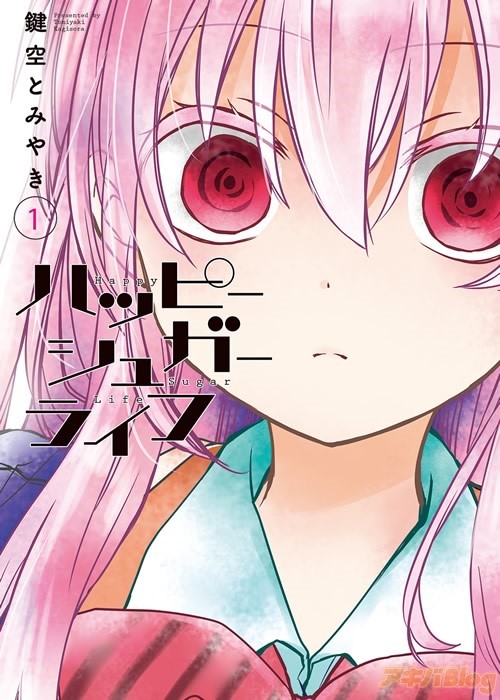
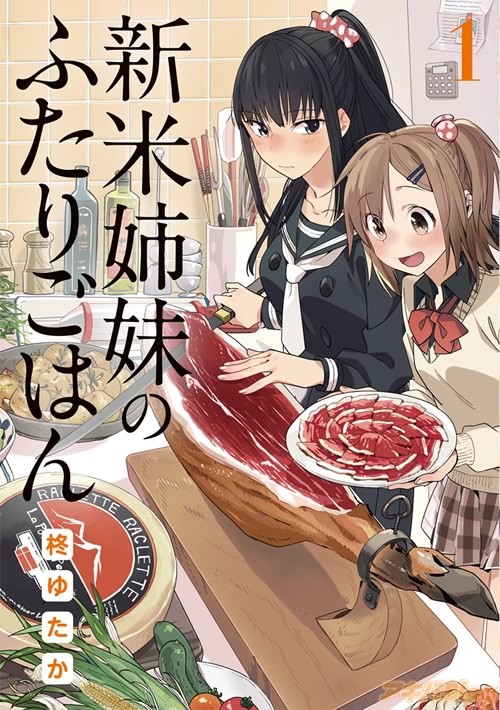
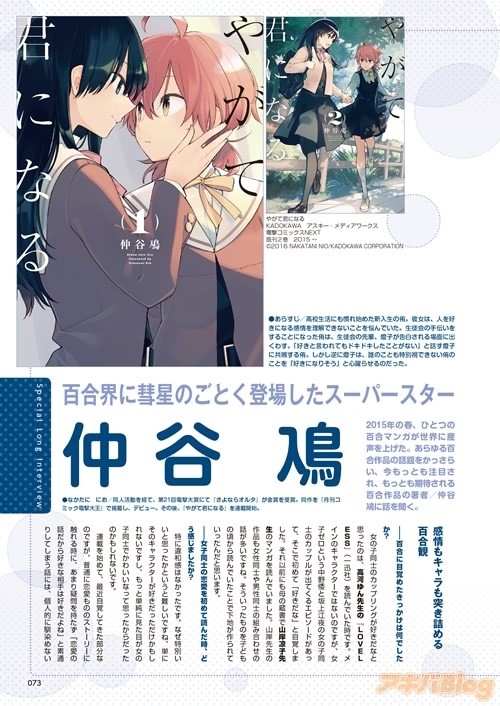
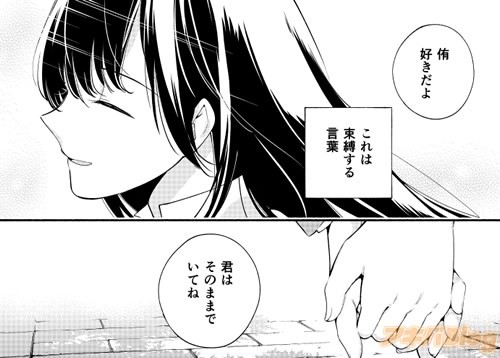

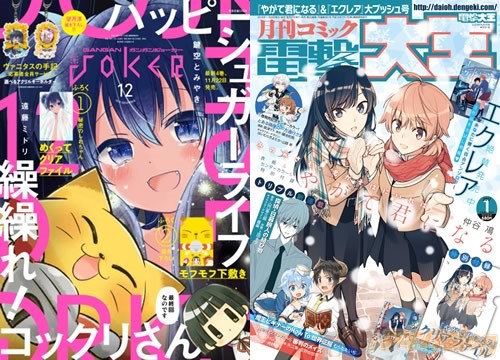
Very interesting interview! Thank you! One question though: Isn’t Nakatani-sensei female? I kinda got confused because you first refer to them as “she” and later “he”:
>>Kusunoki: I talked with Nagatani-sensei and he mentioned the tenth chapter’s structure was “always meant to do that from the start of planning!” Because he had planned that,<<
Fixed, thanks! Things got wonky for one paragraph.
Sorry about that! That was my mistake and simply a typo during writing. I can’t speak to what was going on in my head during that misfire.
Thank you so much for the translation! I’m excited for my copy of Bloom Into You 1 to come in, and I’m really happy about the push for more yuri licences in the US. I used to only have Morinaga Milk to keep me company LOL
Thank you for this. I greatly enjoyed reading what the Editors says about yuri in general.
I had this post bookmarked for about a month now because I wanted to read the first volume of bloom into you first, but now that I’ve come around to do that, I could read this interesting interview. I’ve only recently become a fan of yuri, it was because of citrus, so it’s nice to see the genre is growing. The thing they mention about it being a challenge to make Yu relatable, didn’t really work for me. I didn’t know anyone who was special to me but neither was I special to someone else. I think that difference does… Read more »
I know this is an old post, but on the off-chance that anyone sees this, I’d actually say Japan is more tolerant with it, at least as far as media is concerned. You probably never realized it since it wasn’t a big focal point of discussion and nobody kicked a fuss about it, but Yuri has been in motion in a larger sense since at least the 90s. Arguably, you could even trace it all the way back to the 70s